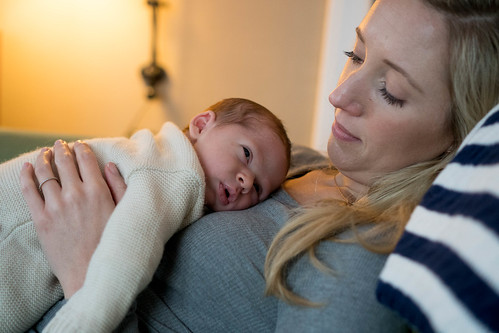Protein expression was detected making use of the Tremendous Delicate Polymer-HRP IHC Detection System (BioGenex Laboratories Inc., San Ramon, CA). The immunostaining procedure was carried out in accordance to Maae et al [forty three]. The percentages of CCL20 or IL-22 constructive cells were averaged to yield an immunohistologic rating ranging from % to a hundred%. The outcomes have been classified into two teams (positiveimmunostaining team and unfavorable-immunostaining team) in accordance to the intensity and extent of staining. For the damaging-immunostaining group, either no staining was present (staining depth score = ) or positive staining was detected in much less than ten% of the cells (staining depth score = one) for the positivestaining group, moderate or robust immunostaining was current in 10% to thirty% (staining intensity score = two) or far more than 30% of the cells (staining depth score = 3).
The unpaired College student t test was utilised to consider the significance of the big difference between two experimental outcomes. For the investigation of patients’ tissue sections for IHC staining, the Fisher’s precise examination was utilized for statistical investigation owing to small sample measurement (n = 24). A p value ,.05 was regarded statistically important.Given that CCL20 plays a part in gut mucosal swelling [346] and that CCL20 expression is detected in mucosal tissues infected by H. pylori [38,40,41], we examined no matter whether CCL20 expression was induced in the human gastric epithelial mobile lineAGS cells on H. pylori an infection. Infection of AGS cells with H. pylori at numerous MOI resulted in CCL20 induction. The optimal MOI for CCL20 induction was fifteen (Fig. 1A), and CCL20 mRNA expression peaked at three-h put up-an infection (Fig. 1B). Regular with the induction of CCL20 mRNA, CCL20 protein secretion was also elevated in AGS cells infected with H. pylori (Fig. 1C). These action was inhibited by the presence of IL-22 (p,.05). Taken with each other, outcomes from the reporter assays plainly point out that the NF-kB consensus binding internet  site in the CCL20 promoter is vital for conferring the inhibitory effect of IL-22 on H. pylori-induced CCL20 expression. We then examined whether or not IL-22 prevented the degradation of IkB or the 1158279-20-9 nuclear translocation of NF-kB, top to reduced amounts of NF-kB. Western blotting confirmed that H. pylori infected AGS cells with or without having IL-22 treatment method had related amounts of NF-kB in the nuclei (Fig. 6A) and that IL-22 did not influence the degradation of IkB (Fig. 6B). , but much more most likely thanks to reduced binding of NF-kB to the NF-kB consensus binding website in the CCL20 promoter soon after nuclear translocation of NF-kB. We further executed EMSA to show that NF-kB binding to the NF-kB consensus binding web site in CCL20 promoter was critical for IL-22-attenuated CCL20 induction. Nuclear extracts from AGS cells contaminated with12628493 H. pylori in the absence or existence of IL-22 have been incubated with a 32P-labelled oligonucleotide probe comprising the NF-kB binding site in the CCL20 promoter, and the existence of NF-kB in the binding complexes was detected by supershift reactions with antibodies specific to p50 or p65 NF-kB subunits. As revealed in Fig. 7A, the radioactive
site in the CCL20 promoter is vital for conferring the inhibitory effect of IL-22 on H. pylori-induced CCL20 expression. We then examined whether or not IL-22 prevented the degradation of IkB or the 1158279-20-9 nuclear translocation of NF-kB, top to reduced amounts of NF-kB. Western blotting confirmed that H. pylori infected AGS cells with or without having IL-22 treatment method had related amounts of NF-kB in the nuclei (Fig. 6A) and that IL-22 did not influence the degradation of IkB (Fig. 6B). , but much more most likely thanks to reduced binding of NF-kB to the NF-kB consensus binding website in the CCL20 promoter soon after nuclear translocation of NF-kB. We further executed EMSA to show that NF-kB binding to the NF-kB consensus binding web site in CCL20 promoter was critical for IL-22-attenuated CCL20 induction. Nuclear extracts from AGS cells contaminated with12628493 H. pylori in the absence or existence of IL-22 have been incubated with a 32P-labelled oligonucleotide probe comprising the NF-kB binding site in the CCL20 promoter, and the existence of NF-kB in the binding complexes was detected by supershift reactions with antibodies specific to p50 or p65 NF-kB subunits. As revealed in Fig. 7A, the radioactive
We next examined whether the IL-22-attenuated H. pyloriinduced CCL20 expression was mediated by reducing the transcriptional action of CCL20. To recognize the location of the CCL20 promoter responsible for CCL20 gene transactivation in response to H. pylori, we produced two pGL3-CCL20 reporter constructs, pGL3-862 and pGL3-3491 made up of a 933-bp (from 2862 to +seventy one) and a 3562-bp (from 23491 to +71) segment, respectively, of the human CCL20 fifty nine-flanking region connected upstream to the firefly luciferase coding sequence.